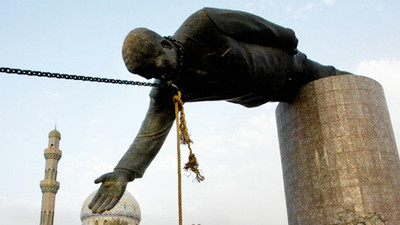Who is Abraham Wold, a statistician who made ``survival bias'' famous?

Survivorship bias is a
The Legend of Abraham Wald - by Jørgen Veisdal
https://www.privatdozent.co/p/the-legend-of-abraham-wald
Wald was looking at ways to minimize damage to bombers from enemy fire during World War II. At this time, researchers at the Naval Analysis Center argued that ``armor should be thickened in the places where the most damage was done in the aircraft returning from the mission.''
The damage distribution data at this time is as follows. The red dot is where the damage was.

However, Wald points out that 'studies by the Center for Naval Analysis consider only mission-surviving aircraft.' From the above damage distribution data, it seems that the bomber's cockpit area, engine part, both wing center parts, and rear part of the fuselage are not damaged at all. However, since the damage distribution data itself is obtained only from surviving aircraft, it is possible that ``fighters with damage to the cockpit area, engine part, center part of both wings, and rear part of the fuselage could not survive.'' It means that you have to point it.
This episode has become a great metaphor for the concept of 'survival bias', and Wald's name is often mentioned along with the bomber's damage distribution data. However, Privatdozent says, ``Certainly this survival bias episode is a sensible one, but it is far from Wald's important contribution to science.''
Wald was born on October 31, 1902 in the eastern part of the Austro-Hungarian Empire (modern Romania). Wald's father, a Jewish businessman, was unable to attend the local school because Jewish law prevented him from attending Saturday classes. However, he took an exam while receiving classes from a private tutor, and entered the Faculty of Mathematics at Babes-Bolyai University in his hometown. In 1927 Wald entered the Institute of Mathematics at the University of Vienna.
Under the guidance of

Wald achieved excellent grades as a graduate student, but because there were few public positions in Vienna at the time, and because Jews were discriminated against in Austria at the time, Wald went to university in Vienna. could not get the job. Wald's Hungarian accent and appearance were clearly subject to discrimination in Vienna, where anti-Semitism was increasing, and Wald was in a state where even daily life was not possible.
Wald's mentor, Menger, introduced Wald to work as a private tutor teaching advanced mathematics to the economists Karl Schlesinger and Oskar Morgenstern, with whom he was familiar. This sparked Wald's interest in economics and statistics.
After that, Wald formed a friendship with Schlesinger and began studying mathematical economics. In 1934, he published two papers, ``On the inherent non-negative solvability of the new production function'' and ``On the production equation of the theory of economic value.'' Although this paper did not receive much attention when it was first published, it was later published in an economics journal by Morgenstern, and later translated into English and became known around the world. His studies in mathematical economics prompted Wald to accept an invitation from the Cowles Foundation , an American economic research institute, but he refused to leave Vienna.
However, with the forced annexation of the Republic of Austria by Nazi Germany in March 1938, the anti-Semitic atmosphere in Vienna became even stronger, making Vienna even more difficult for Wald to live in. In the autumn of 1928, he emigrated to the United States after receiving an invitation from In addition, it seems that Wold's brothers and families who remained in Vienna were sent to the Auschwitz concentration camp during World War II and lost their lives.
After emigrating to America, Wald married in 1941. That same year he was hired as an assistant professor at Columbia University, and in 1944 he became a professor of mathematical statistics. The above episode of survival bias was when I worked with the military as a member of the Columbia University Statistical Research Group.

In 1950, Wald traveled to India with his wife at the invitation of the Indian government, but the plane from Kolkata to Bengaluru crashed, killing all the passengers, including the Wald couple. Morgenstern said, 'Wald was withdrawn from the scientific community and many of his friends at the height of his life. He had more to offer than anyone else in the field and was full of new and expansive ideas. Wald and his ideas are lost to us, but the work he completed will live on to guide the next generation.'
Wald has published more than 100 books and papers in his lifetime, and Menger and Morgenstern have published a book summarizing Wald's life and achievements.
Related Posts:







